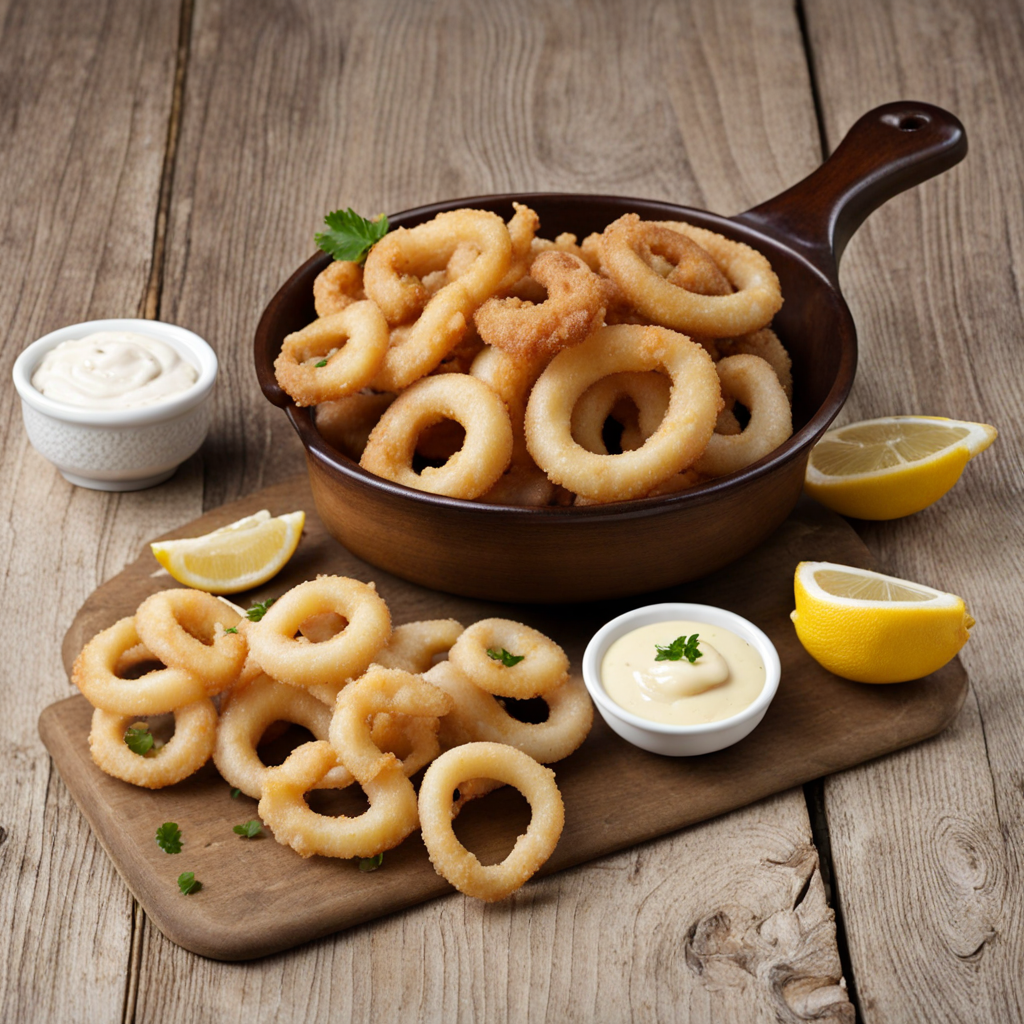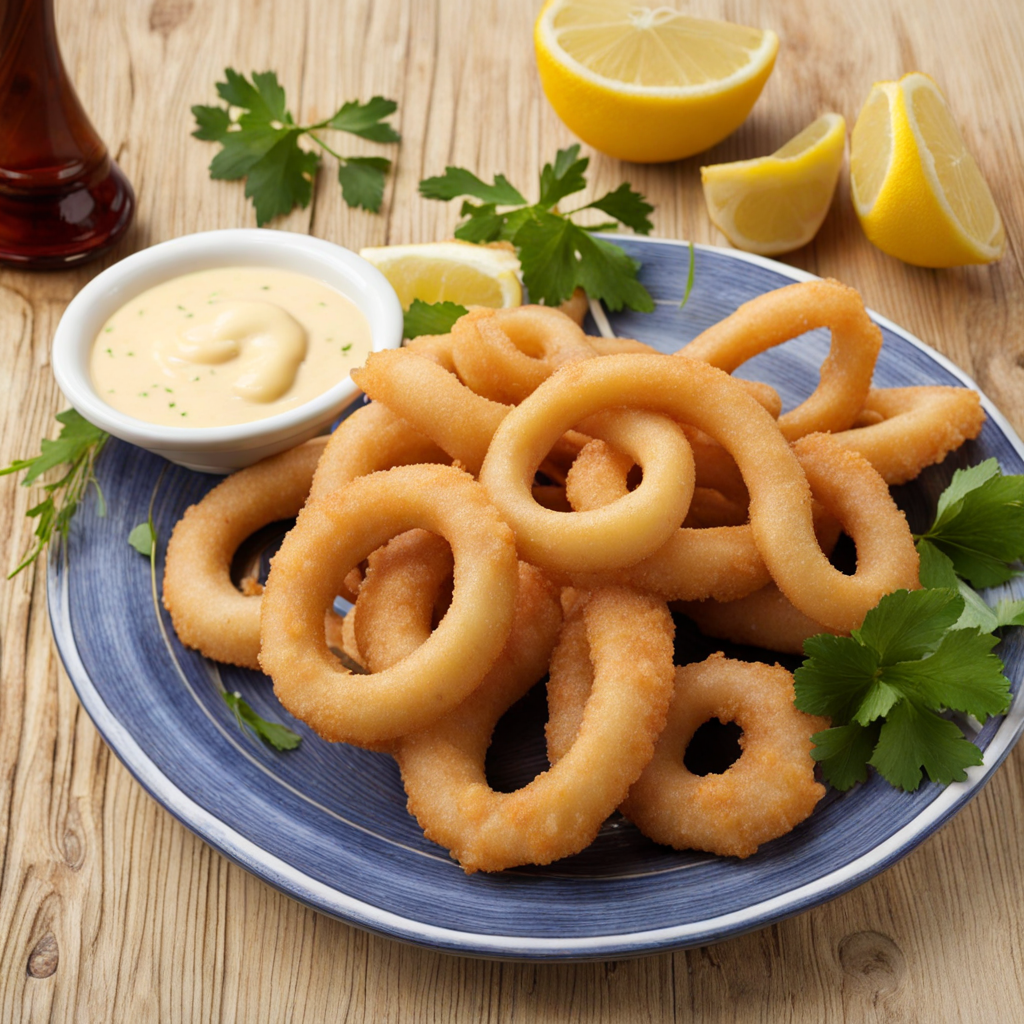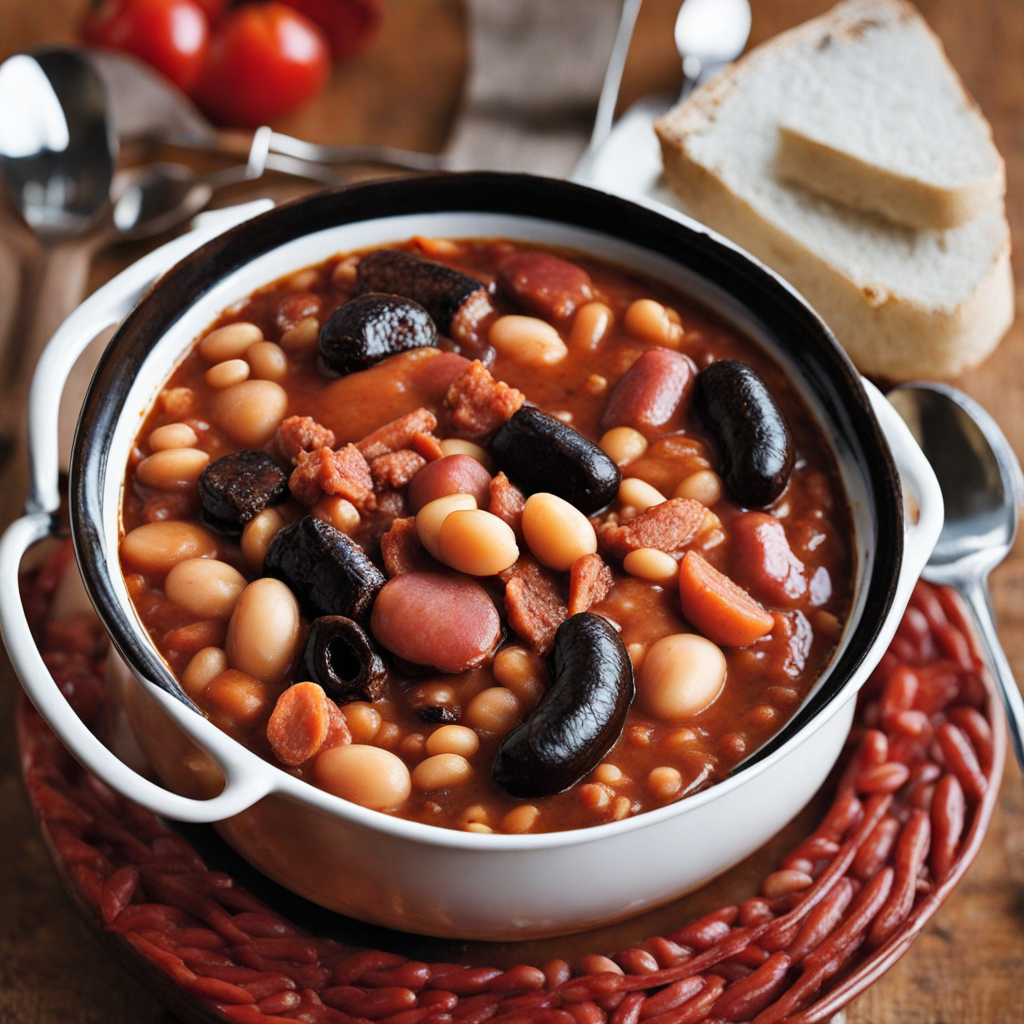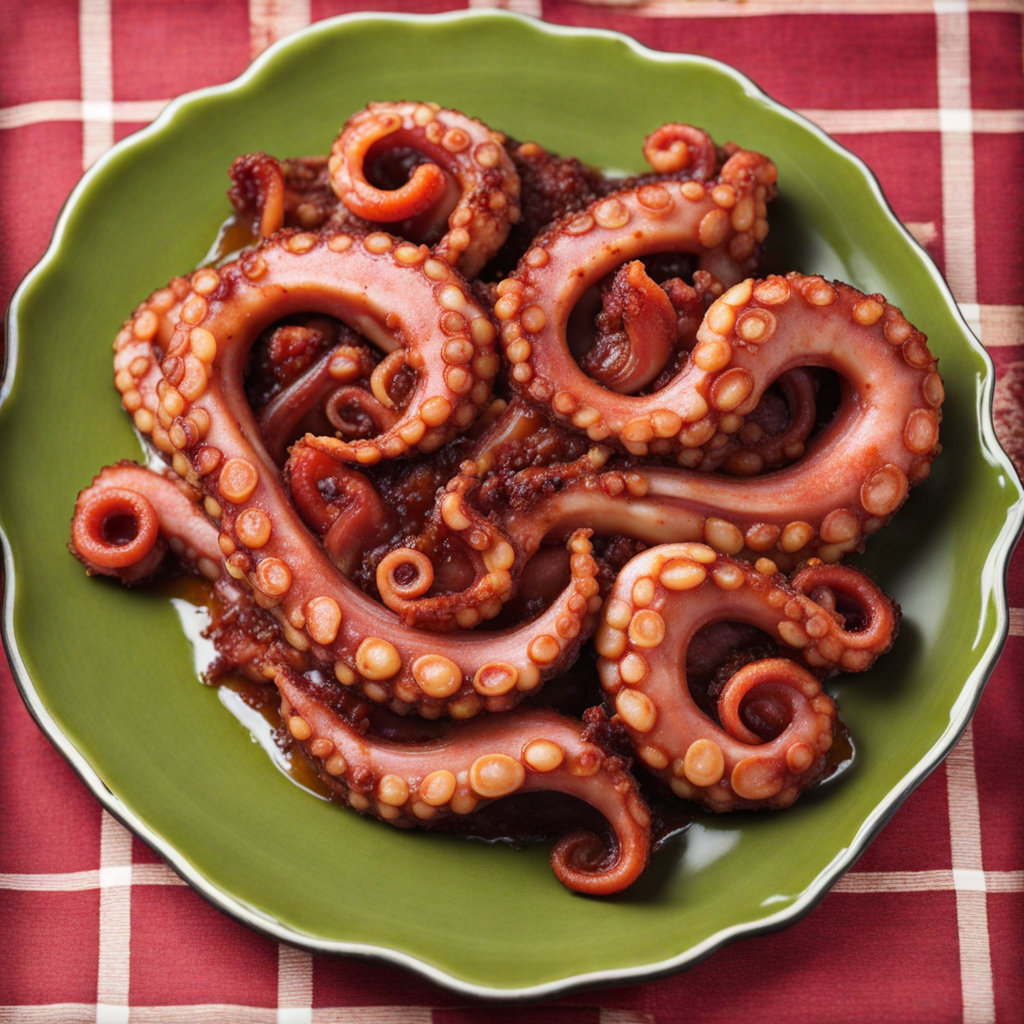Calamares a la Romana
Calamares a la Romana is a traditional Spanish dish that showcases the exquisite flavors of the Mediterranean through its simple yet delightful preparation. This dish primarily features tender squid, which is cut into rings and then coated in a light batter before being deep-fried to a crispy golden brown. The contrast between the crunchy exterior and the soft, succulent squid creates a texture that is both satisfying and addictive. The dish is often served with a wedge of lemon, which adds a zesty freshness that elevates the overall flavor profile, making each bite a delightful experience. The batter used in Calamares a la Romana is typically made from flour, water, and sometimes a hint of baking powder or cornstarch, which contributes to its light and airy quality. Some variations may include a touch of seasonings or spices to enhance the flavor, but the focus remains on allowing the natural sweetness of the squid to shine through. This dish is commonly enjoyed as a tapa, perfect for sharing with friends and family over a glass of refreshing Spanish wine, or as a starter in a larger meal, showcasing the culinary traditions of coastal Spain. What truly sets Calamares a la Romana apart is not just its taste but also the experience of enjoying it. When served hot and fresh, the aroma of the fried squid fills the air, inviting diners to indulge in this crispy delight. Often accompanied by a side of aioli or a spicy dipping sauce, the dish becomes a canvas for flavor exploration, allowing those who partake to experiment with different combinations. Whether enjoyed at a bustling tapas bar in Madrid or prepared at home for a cozy gathering, Calamares a la Romana is a testament to the rich culinary heritage of Spain, promising a memorable adventure for the palate.
How It Became This Dish
Calamares a la Romana: A Culinary Journey Through Spain Origins and Early History Calamares a la Romana, a beloved Spanish dish consisting of battered and fried squid, has its origins deeply rooted in the Mediterranean culinary tradition. The dish, which translates to “Roman-style squid,” is often attributed to the coastal regions of Spain, particularly Andalusia, where the Mediterranean Sea's bounty has influenced local gastronomy for centuries. The practice of frying seafood can be traced back to ancient civilizations. The Romans, who were known for their diverse and sophisticated cuisine, frequently prepared seafood. They used various cooking methods, including frying, which they likely learned from earlier Greek and Phoenician influences. The term "a la Romana" suggests a Roman connection, although the specifics of this relationship are somewhat murky. It may refer to the preparation style that was popularized in Rome, or more broadly to the influence of Roman culinary techniques on Spanish cuisine. Squid itself has been consumed since antiquity, with different cultures across the Mediterranean region utilizing the mollusk in various ways. In Spain, its popularity began to rise during the Middle Ages, especially in coastal communities where fresh seafood was abundant. However, it wasn't until the 20th century that the dish we now recognize as Calamares a la Romana emerged as a staple of Spanish cuisine. Cultural Significance Calamares a la Romana is more than just a dish; it is a cultural emblem of Spain's maritime heritage. The act of frying squid, often accompanied by a simple batter of flour and water, reflects the resourcefulness of coastal communities that sought to preserve and enhance the natural flavors of the sea. The dish is commonly served as a tapa, a small plate of food meant for sharing, which is an integral part of Spanish dining culture. The tapas tradition encourages socializing and communal eating, making Calamares a la Romana a favored choice for gatherings among friends and family. In addition to its role in social dining, Calamares a la Romana has become a symbol of Spanish gastronomy in the global culinary landscape. As Spanish cuisine gained popularity worldwide, particularly in the late 20th and early 21st centuries, this dish became a recognizable representation of Spain's vibrant culinary scene. It has been embraced not only in Spain but also in international restaurants, where it is often featured on menus to showcase the richness of Spanish flavors. Development Over Time While the roots of Calamares a la Romana can be traced back to ancient culinary practices, the dish has evolved significantly over time. In its early iterations, squid was often prepared simply, with minimal seasonings. However, as Spanish cuisine developed, so did the methods of preparing and serving squid. By the mid-20th century, Calamares a la Romana began to gain prominence in Spanish bars and restaurants. The dish was typically served with a side of lemon wedges and a simple alioli (a garlic mayonnaise), enhancing the flavors of the tender squid. In coastal regions, such as Andalusia and Valencia, variations of the dish emerged, incorporating local ingredients and culinary influences. For instance, in some areas, chefs began adding spices such as paprika to the batter, giving the dish a distinctive flavor and a deeper color. The rise of tourism in Spain during the latter half of the 20th century played a significant role in the popularization of Calamares a la Romana. Visitors flocked to coastal towns, eager to sample the local cuisine. As a result, restaurants began to adapt their menus to cater to international tastes, leading to the widespread availability of Calamares a la Romana beyond the traditional settings. The dish became a staple not only in tapas bars but also in seafood restaurants and casual dining establishments across the country. In the 21st century, as the global culinary landscape became more interconnected, Calamares a la Romana found its way into fusion cuisine. Chefs began experimenting with the dish, incorporating elements from other culinary traditions. Some explored innovative batters using gluten-free flours or incorporating spices from Latin America and Asia. Others played with presentation, serving the fried squid atop creative salads or in gourmet taco formats. Modern dining trends have also influenced Calamares a la Romana. As consumers have become more health-conscious, some establishments have opted to offer healthier alternatives to the traditional frying method. Techniques such as grilling or baking have emerged, allowing for a lighter version of the dish that still retains its essence. Calamares a la Romana Today Today, Calamares a la Romana remains a quintessential part of Spanish cuisine, celebrated for its simplicity and versatility. It can be found on menus from traditional tapas bars in Seville to upscale restaurants in Madrid. The dish has transcended its humble origins, evolving into a culinary icon that reflects the rich tapestry of Spain's cultural heritage. In Spain, enjoying Calamares a la Romana is often accompanied by a vibrant atmosphere, whether at a bustling beachside chiringuito (beach bar) or a cozy neighborhood tavern. The dish continues to foster connections among people, bringing friends and families together to share in the pleasure of good food and conversation. The popularity of Calamares a la Romana has also made it a staple in many Spanish-themed restaurants around the world. As diners seek authentic experiences, they are drawn to this crispy, flavorful dish that embodies the spirit of Spain. In conclusion, Calamares a la Romana is more than just a dish; it is a reflection of Spain's rich maritime heritage, cultural significance, and evolving culinary landscape. From its ancient roots to its modern adaptations, this fried squid dish continues to capture the hearts and palates of food lovers across the globe, ensuring its place as a cherished component of Spanish gastronomy for generations to come. Whether enjoyed as a tapa or a main course, Calamares a la Romana will always evoke the flavors and traditions of the Mediterranean.
You may like
Discover local flavors from Spain







